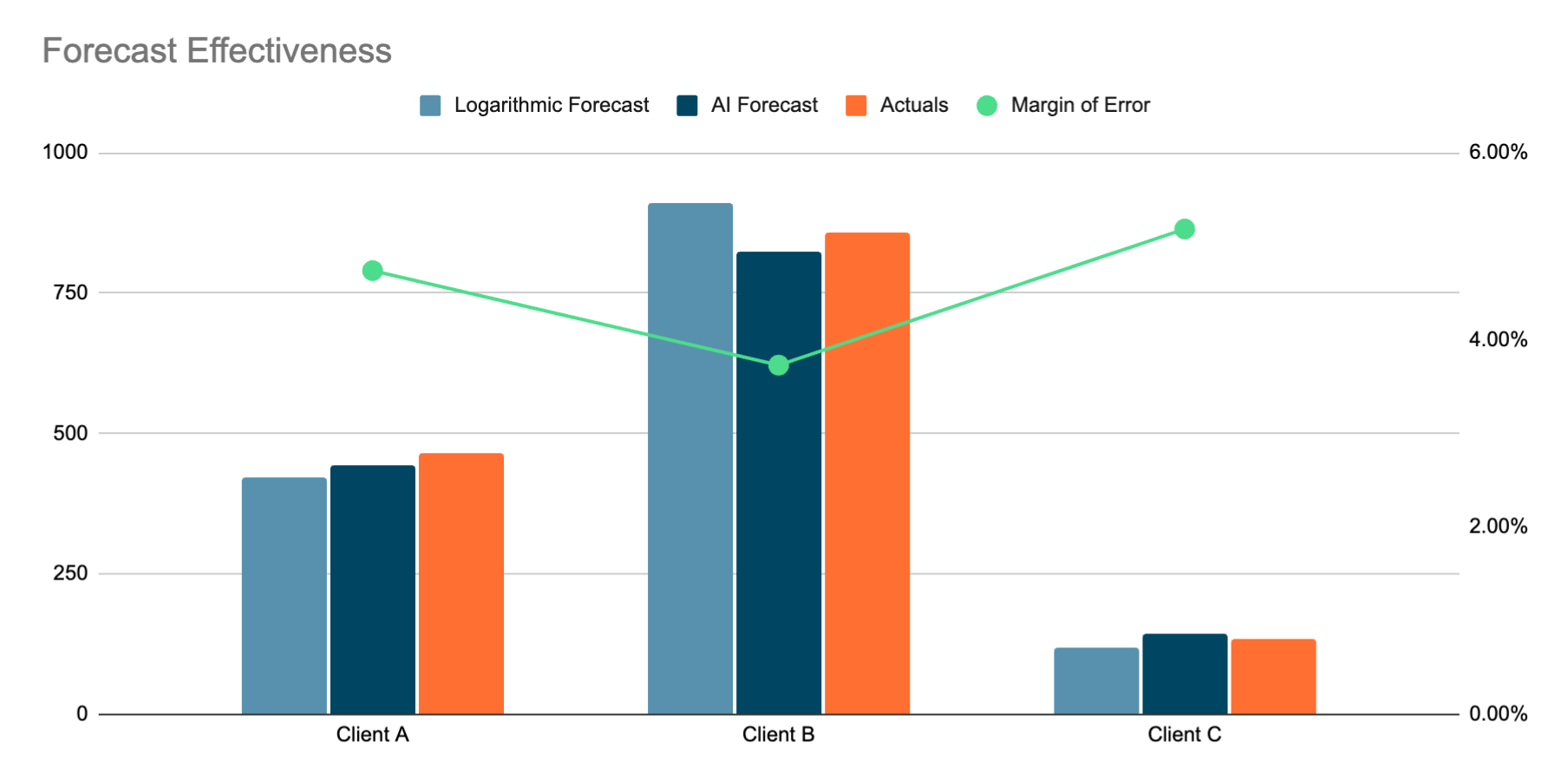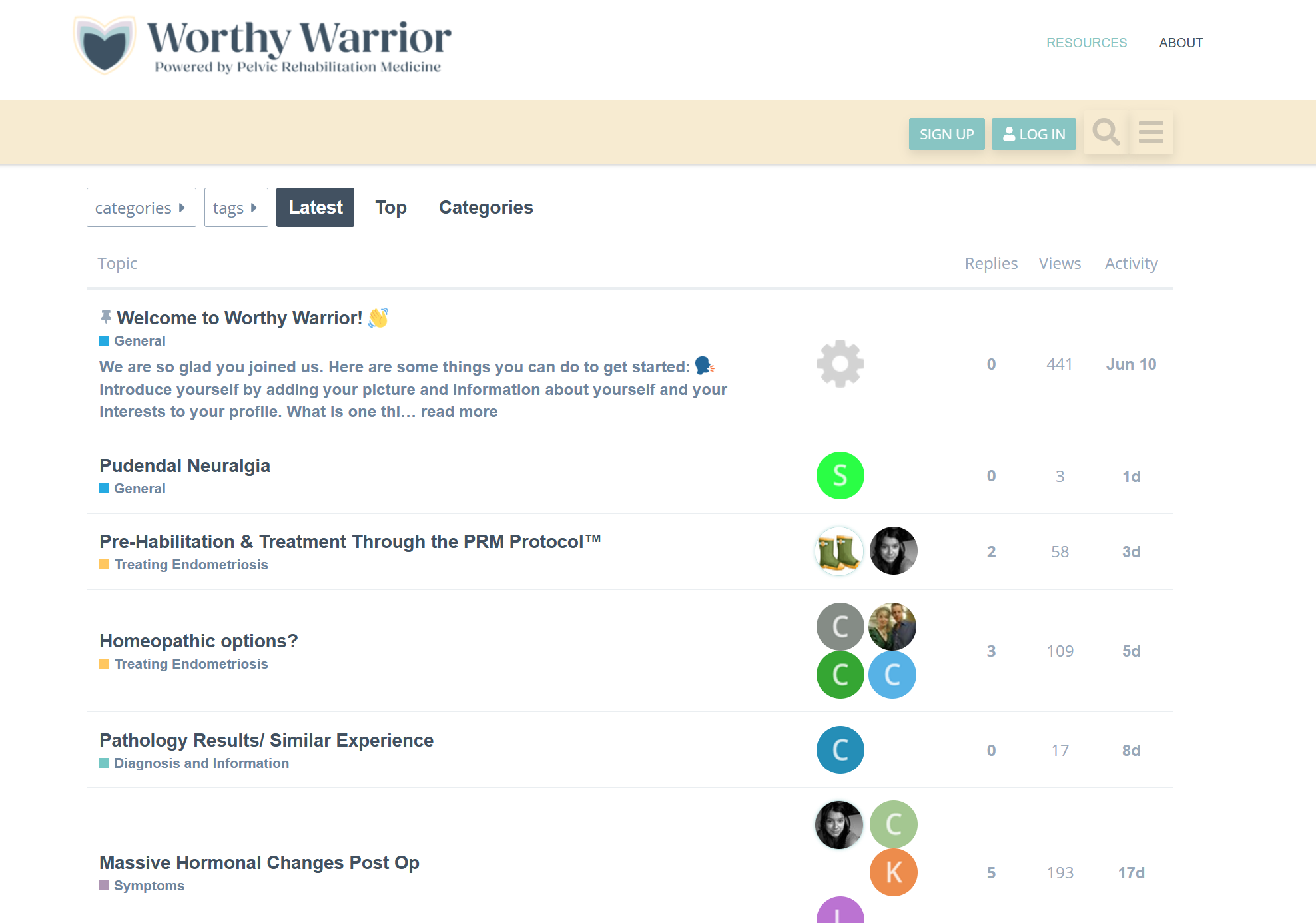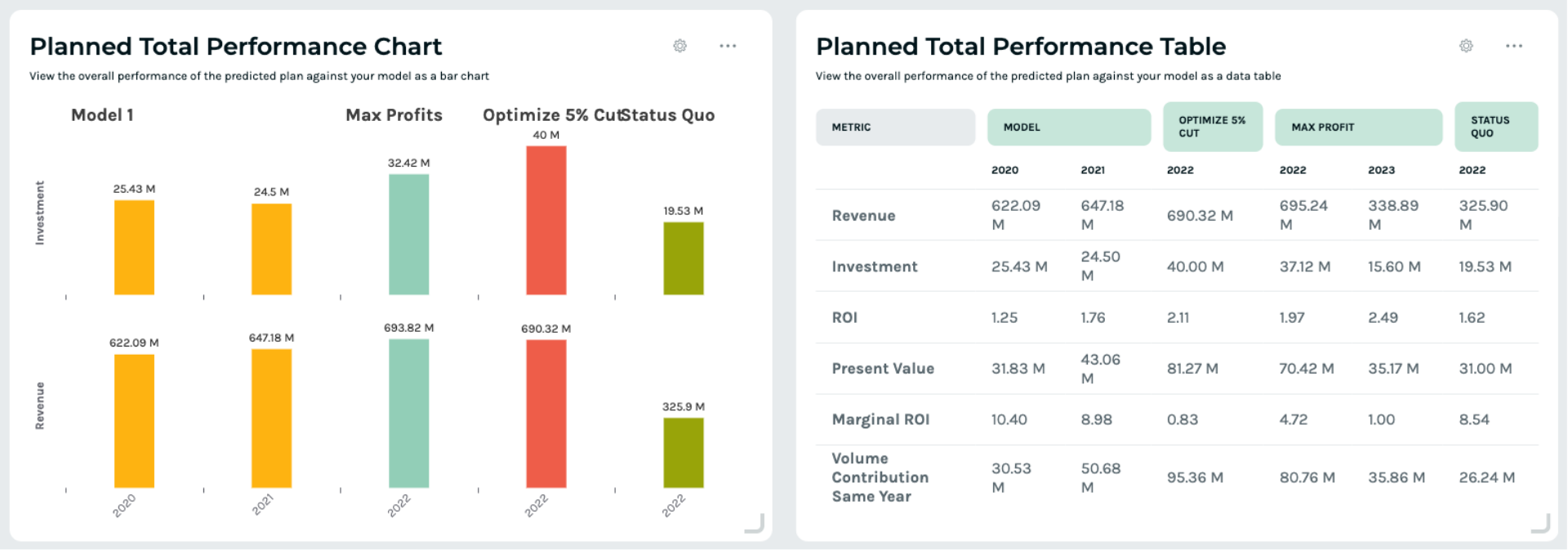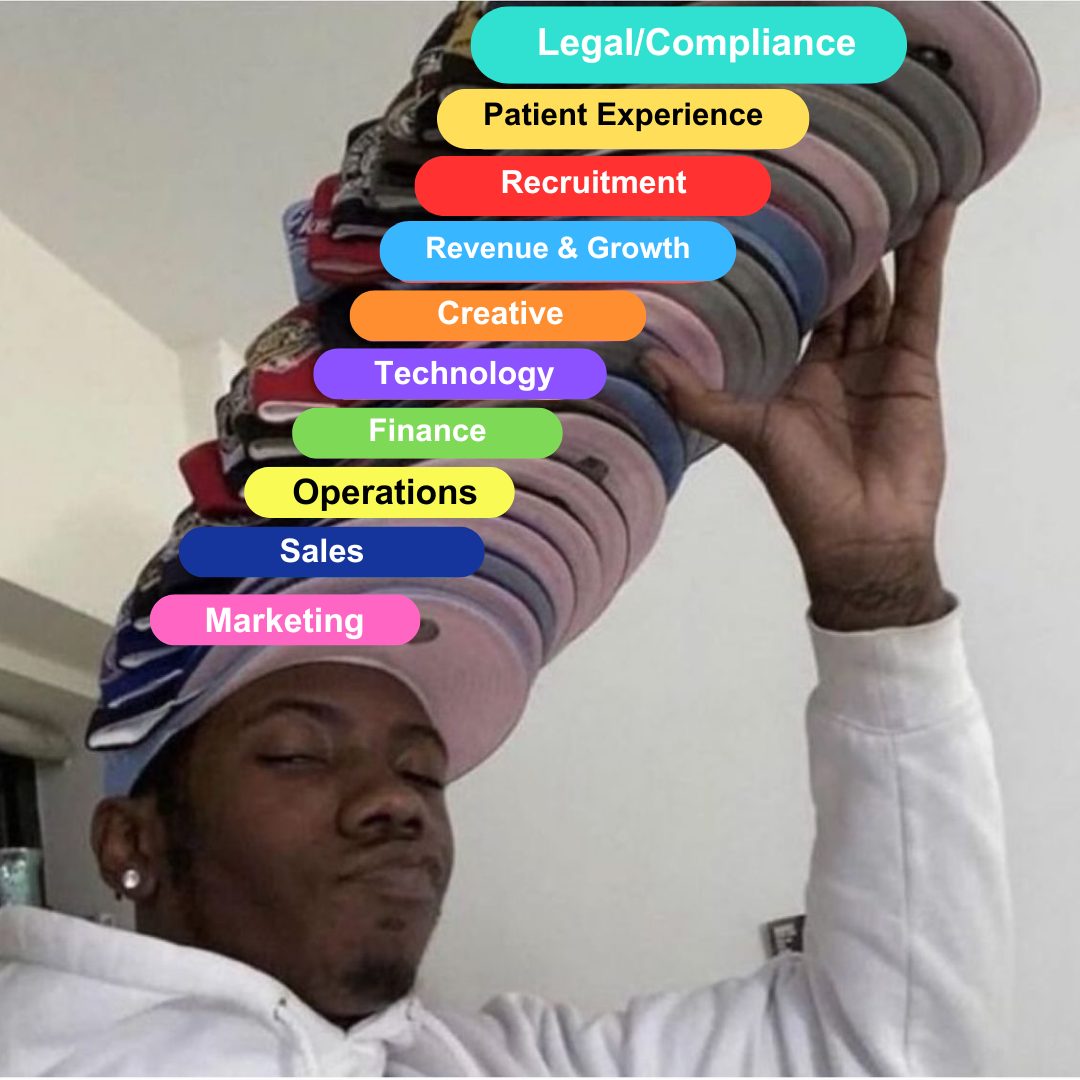I’m not gonna sugar-coat it: the economic climate for the healthcare industry was not the best in 2024, and 2025 isn’t looking great either.
Table of Contents
- You Need Next-Gen Patient Journeys
- Patient Acquisition Strategies Need a Diversified Channel Mix
- Marketing + Ops Must Work Together to Engage Patients
- Capacity Balance Is Essential to Maintain Patient Expectations & Grow Revenue
- Growing Demand for Data Democratization
- AI Adoption Is Growing in Healthcare Marketing
- Healthcare Consumers Crave Authenticity
- Marketers Seek New Measurement Frameworks
- Marketing Leaders Must Now Wear Many Hats
Consumer concerns about high healthcare costs continue, with over two-thirds of US consumers saying healthcare costs are a financial burden to them and their families.
The result is a consumer base that is more discerning than ever when it comes to shopping for healthcare—and “shopping” is the key word because they are very much researching options and comparing everything from cost to ease of access in making decisions.
In this environment, it’s more important than ever to find effective ways to engage and retain these discerning patients and be sure your efforts are supported by best practices in-house to maximize the effect of your marketing dollar.
Here are the top healthcare marketing trends for 2025 that address those challenges directly:
You Need Next-Gen Patient Journeys
The patient journey has evolved, but you can’t build the patient journeys of the future without the right marketing technology. Customer data platforms (CDPs), such as healthcare privacy platform Freshpaint and call tracking systems like Liine, Patient Prism, and Call Rail, give you access to critical data on how patients interact with your brand — and the outcomes of those interactions. This information will let you identify opportunities to eliminate friction points and deepen the relationship.
Beyond first-party data, you can also use third-party data through resources like Liveramp to gather insights into consumer preferences, behaviors, and psychographics to build patient personas. And it’s crucial to ensure you’re being seen by the right audience.
“As you start to survey those consumers, you have to be a little bit prescriptive in who you want to survey and who you want to understand. But then going back and validating. Are we actually reaching the right people? Are we actually reaching the ones that are making the decisions? Or, how does that vary by service line?”
—Andrew Henderson | Director of Marketing Strategy, HCA Healthcare.
One commonality among many modern healthcare consumers is a desire for online options when it comes to scheduling appointments.
“That digital-first, modern booking and scheduling experience, paired with a robust CRM to streamline the journey from booking to the chair, is highly valued by our members.”
–Matthew Fitzgerald | Chief Marketing Officer, Tend Dental
Ultimately, marketers need to become proficient with technology to make these next-gen patient journeys happen. The first step is figuring out what patients want, which can be as simple as asking them if they prefer to engage with your brand via phone, email, SMS, or MyChart.
But you can’t *just* ask them, because you also have to meet patients where they’re at…
Patient Acquisition Strategies Need a Diversified Channel Mix
The modern patient journey spans a multitude of stops in the digital world, and an omnichannel strategy is key to influencing and engaging them. In 2025, savvy marketers will be looking to expand their channel mix in order to:
Overcome Diminishing Returns:
All campaigns and media channels will reach their saturation point, where the incremental returns on investment start to diminish. Typically, healthcare organizations will leverage lower-funnel, high-intent Google Ads to drive leads. But there will come a point where you’ve maxed out all optimizations, and your budget just isn’t delivering the results you need. By diversifying media, you can test to see how adding new channels, like paid social, impacts overall results.
Achieve Cross-Channel Synergy:
A diversified media mix often results in a “lift” effect, where one channel enhances the effectiveness of others. For example, brand awareness efforts on display or video ads can make users more likely to click on a paid search ad later, proving that incremental impact is higher when channels work together.
Reach Diverse DMU:
In healthcare, decisions often involve multiple people—such as patients, parents, spouses, or adult children. By diversifying your media mix, you reach a broader range of channels that cater to different demographics and communication preferences. For example, adult children may be more responsive to social media and display ads, while older decision-makers might engage more with email or traditional media like print. A varied media mix ensures your brand becomes familiar and trusted across all segments of the DMU.
Increase Brand Awareness & Trust:
High-acuity healthcare decisions are rarely made on the spot; they typically involve a long decision-making process with extensive research and deliberation. With consistent brand exposure across multiple media channels, you keep your brand visible to the DMU throughout the entire journey. This reinforces your credibility and relevance, making it more likely that they’ll recall your brand when they’re ready to make a decision.
Of course, if you really want to reach your audience…
Marketing + Ops Must Work Together to Engage Patients
Not all patients default to attending regular healthcare appointments as needed. According to the latest Monigle report on Humanizing Brand Experience, disengagement among healthcare consumers is on the rise, with the 3rd largest consumer segment now being classified as “Doctor Dodgers”—account for 16% of the US population (21+).
Note that this is NOT the segment who are apathetic about their healthcare. These are people who want healthcare and seek it out, but encounter obstacles along the way and are too busy to fight through those obstacles and make healthcare a priority. If accessing care is difficult and complicated, if it is hard to get an appointment or time-consuming to fill out forms, they are already too stressed and may decide to delay their healthcare indefinitely.
The result: A lack of care for them and a lack of revenue for you.
So ask yourself: What’s preventing them from getting care, and what can you do to make it easier for your patients to access care?
You should:
- Examine your digital front door – Is it mobile-friendly? ADA compliant? Do you use an appropriate reading level (e.g., 6th grade)?
- Listen to your call tracking transcripts – Are there hiccups and barriers preventing patients from booking care?
- Confirm how long patients are waiting – What’s your average appointment time?
- Ensure that you are re-engaging existing patients – Do you send appointment reminders? Text or SMS or phone call, as your patients prefer?
It’s not enough just to advertise to patients; you have to make sure their path is as smooth as possible to attend that first appointment and every appointment thereafter.
“We still need to assume that the individual on the other side is not entirely comfortable with reaching back. We constantly as marketers have to be making that individual feel welcome, supported, and heard every step of the way… throughout the entire journey for that individual, not just getting them to the door for the first time.”
—Michael Midgette | Chief Growth Officer, Thriveworks
And the need for Marketing and Ops to collaborate doesn’t end there…
Capacity Balance Is Essential to Maintain Patient Expectations & Grow Revenue
One of the most important inputs for your marketing campaigns is something that no amount of pure advertising data will tell you: Capacity.
This is why it’s essential to communicate with operations to stay current on operational capacity, by location and by service line.
“We need clear communication about capacity limits, resource availability, and potential bottlenecks. It’s about setting realistic targets and avoiding overextension by working closely with our ops and programming crews.”
—Mari Considine | Chief Marketing & Development Officer, Acenda Integrated Health
When you market for providers already facing staffing shortages, wait times are extended, sometimes by months. And then one of two things is likely to happen with your patients:
- They seek out a competitor
- They wait months for an appointment with you, and brand satisfaction plummets
Neither one is a good use of your marketing dollar, so it’s essential that you plan your media investments in line with current practice capacity rather than spending a blanket amount across all locations
We partner with a behavioral health client, a segment in which staffing shortages and long waitlists are commonplace. They faced challenges aligning capacity with their marketing efforts, so we reimagined their approach. Instead of blanket spend campaigns, we implemented a dynamic 3-tier strategy, funneling more budget to locations with higher availability and continuously adjusting based on the latest waitlist data.
The result was a great improvement in booking rates, which was made possible only because marketing and ops were aligned and capacity data was constantly shared.
Sharing data has other benefits as well…
Growing Demand for Data Democratization
A big focus for healthcare groups is “data democratization”—making sure that all their data from disparate systems are in one place and that everyone can access it. That means marketing, operations, and the executive team. I can’t tell you how many speakers at Scaling Up made a point of mentioning this, so I’ll just let some of them explain it:
“Making data democratized means ensuring that our C-suite is fully read in on what’s happening, even at a very granular level, and allowing them to dive deep. That’ll probably resonate with a lot of people who are listening in on this, as executives always wanna go deeper.”
—Clay Nickens | Vice President, Strategy & Growth, Action Behavior Centers
“We want to do a better job of speaking the same language as our business partners and making sure that we’re very aligned in our thinking. It’s more of a collaborative, strategic conversation where we make it more apparent what is possible, and they make it more apparent what the problem is they want to solve.”
—Tom Stanton | Director, Marketing Analytics, Northwell Health
“How to interpret data and then turn that into insights is not just a regurgitation of the data. You’re not just telling a story with no end. It doesn’t matter what department or what team you’re on—you may be a graphic designer. You still have to understand how data works”
—Andrew Chang | Chief Marketing Officer, UChicago Medicine
In short, top healthcare groups have realized that the best way to get everyone at your organization aligned is to make sure everyone is looking at the same data, and to make sure that data is properly aggregated and shared with the relevant people to inform their decisions.
Which is why it’s no surprise that…
AI Adoption Is Growing in Healthcare Marketing
Handling massive amounts of data is one of the things AI does best, making it invaluable for healthcare marketers. A major study by 451 Research showed that Healthcare and Life Science organizations have on average 10 more AI models in production than the average organization in other sectors, with a full 93% of H&LS companies planning to spend more on AI in 2025.
Here are some of the main use cases for AI:
- Audio Processing—automated transcripts for anything from podcasts to phone calls
- Data Analysis—crunching masses of data to distill useful insights, e.g. call tracking
- Enhancing SEO—automated analysis of search trends and competitive intelligence
- Forecasting—predictive analysis, based on historical data
- User Research—patient profiles and sentiment analysis
- Content Generation—AI-powered copywriting and ad generation
Healthcare organizations are carefully onboarding AI solutions, and using them to improve efficiency across operations, marketing, and other teams
“We’re actively looking at how we can leverage AI. I know we currently use, for example, note takers in an exam room… to detect what’s being said, to document that, to chart that, to alleviate the administrative burden on nurses.”
—Andrew Henderson | Director of Marketing Strategy, HCA Healthcare.

However, note that AI has many caveats as well:
- PHI Still Requires HIPAA Compliance—You can’t feed PHI into any AI like ChatGPT that doesn’t have a BAA in place.
- AI Lies Frequently—Some AI “hallucinations” may be fun Internet memes, but unreliable information is worthless without verification. Expert human oversight is still needed.
- Negative Consumer Sentiment—More of a problem for outward-facing use cases, but AI is associated with low trustworthiness and value.
- Questionable Efficiency—AI is often less effective than alternative methods and consequently should never be blindly adopted organization-wide, but should only be deployed in cases with specific goals in mind that AI is likely to help achieve.
Marketing experts at SHSMD and HMPS spoke about how organizations are working around these issues to leverage AI-powered tools. In the HMPS session “Innovation & New Technologies: An Evaluation Roadmap,” John Davey, Vice President Marketing Technology at Mount Sinai Health System captured the balance between promise and risk:
“When you do it right and you protect PHI, you have tremendous opportunities, with [drawbacks including] hallucinations that are produced, when we do the content creation portion of it. That’s why a really important part, obviously, is to apply a human review of anything before it gets released into the wild.”
There’s no denying that using AI is a risk. But there’s also no denying that AI can offer great benefits for healthcare marketers. By approaching AI conservatively with a focus on privacy compliance and risk management, healthcare marketers can reap the benefits of AI’s powerful ability to crunch massive amounts of data.
There’s a lot of value to be found in AI data analysis and transcription. But I’d be wary of relying too much on AI for consumer-facing use cases, especially because…
Healthcare Consumers Crave Authenticity
Patients already felt a certain level of distrust, and AI has only exacerbated the worry that search results are unreliable. Patients don’t know whether anything they read online is trustworthy, from a knowledgeable doctor, or even from a doctor at all.
In this climate, authenticity and originality are key to standing out and engaging consumers. Healthcare groups must prioritize their brand and their experts. Content can’t be generic or sound AI-generated. While generative AI can be a tool for ideation, you need to let humans write the story and give it a human voice.
When planning content strategy, prioritize a unique POV that’s backed by research. Show the people behind your brand as the authors of content and as advocates of your brand.

Here are a few tips for getting that done:
Be Original
Consider adding your unique take on content rather than regurgitating what already exists online. Just be sure any content you generate in the healthcare space is vetted, accurate, and held to the highest standards. Never sacrifice quality in pursuit of originality. But do highlight the one-of-a-kind approach and patient experience that your healthcare institute brings to the table. What do your providers wish more patients knew? How can you address questions that often get ignored? Dig deep here to find out what patients want to know, and introduce your authoritative and original voice and answer into the mix.
Think Outside the Box
Sometimes the best marketing doesn’t look like marketing. Here are two innovative initiatives that truly show off authenticity:
Patient Podcast
CHI St. Vincent launched a podcast called “A View From the Bed: A Patient’s Perspective,” which, rather than being driven by provider voices, is about patients sharing an unvarnished view of their healthcare journey. This allows listeners to hear insights from the patient side, which physicians wouldn’t have experience with.
“What we were finding is patients would come to us on social and be like, ‘Hey, do you have any tips for post-recovery?’ [That’s why] the podcast is patients only, and we talk to them about the good, the bad, and the ugly of the procedure.”
—Bonnie Ward | Director, Marketing and Communications, CHI St. Vincent
Community Building via Dedicated Web Community
Diagnosing endometriosis takes an average of seven years—a long, painful journey for patients seeking relief. To bridge this gap and offer a faster path to life-changing care, Pelvic Rehabilitation Medicine (PRM) developed the Worrthy Warrior community to support patients dealing with endometriosis and pelvic pain. The project was designed to empower patients and create a supportive environment where patients can share photos and stories, connect with others sharing similar experiences, and access resources. The forum also allows for direct interaction with doctors, who can respond to patient queries, enhancing the credibility and usefulness of the information shared. These elements create a powerful support system for those living with endometriosis and pelvic pain and helps PRM serve more patients.

Invest in Your Authorship
Authorship matters. As AI-generated content becomes more common, users want more assurance that the information they are getting is from a trusted human authority. Feature your founder, executive team, or doctor as an author and show that a real person is involved. Personal care is important for establishing trust in healthcare, and having an actual doctor or expert associated with your brand’s content increases your brand’s credibility.
Of course, building credibility isn’t as easy to track as click-thru conversions, which is why…
Marketers Seek New Measurement Frameworks
As always, marketers are searching for new solutions to evaluate marketing impact and help them determine where to invest next. This is especially important because current measurement approaches have a few problems:
- HIPAA and state privacy laws are still a concern—using tracking pixels are still a high risk for most organizations and they’re off-limits
- Ad platforms (e.g. Meta, Tiktok) are walled gardens—advertisers don’t have the access to tie engagement to outcomes
- The modern patient journey is complex—many interactions across various platforms/channels means last-touch or first-touch attribution misses a lot
“We strive for things like closed loop, multi-touch attribution, and machine learning forecasts that determine where we should spend the next dollar. This is the dream that we all have as marketers. The reality of marketers, though, is that we are faced with constant challenges that sometimes feel insurmountable. For example, HIPAA concerns… We can’t use pixels anymore. We don’t have the visibility and the measurability that we have become so used to.”
—Rich Briddock | Chief Strategy Officer, Cardinal Digital Marketing
Many healthcare marketers are turning to Media Mix Modeling (MMM) to address all three of the aforementioned challenges in evaluating marketing impact and guiding future investment decisions.

Using revenue and investment correlation, MMM addresses pixel-based tracking concerns while ensuring HIPAA compliance. It eliminates reliance on tracking every click and bypasses closed ecosystems like Meta and TikTok. And by focusing on revenue-driven metrics that matter to key stakeholders (CEO, CFO, COO), MMM moves beyond shallow surface-level metrics that lack outcome alignment.
RevRx™: An MMM and More
We’ve recently released our proprietary business intelligence tool RevRx™, which is built upon a complex MMM that uses a full-information Bayesian econometric model, as well as Cardinal’s deep healthcare expertise. We believe it’s a real game-changer, with statistically modeled forecasting that lets you:
-
- Analyze Past Performance and determine channel contribution
- Measure Incremental Channel Value for each channel towards conversion
- Get Clear-Cut Budget Guidance based on model predictions with <4% error
- Spot Diminishing Returns in case it’s time to diversify
- Show Data Supporting Your Investment Strategy to better communicate value to the C-suite
Learn more about RevRxTM on our podcast.
If this all seems like a lot to take in, that’s because…
Marketing Leaders Must Now Wear Many Hats

For every person looking at that photo and thinking, “Wow, that’s a lot of hats!”, there’s a marketing leader looking at that photo and thinking, “Hey, you missed some.”
The wide range of trends we’ve discussed shows just how complex the role of marketing leader has become. Modern healthcare marketing covers the whole sales funnel from top to bottom and beyond, encompassing everything from patient scheduling to ROI validation. CMOs are expected to collaborate closely with a half-dozen different teams, from Operations to Legal/Compliance, and have expertise in two dozen areas ranging from Patient Experience to Recruitment.
“Marketing is no longer just… ‘do the digital buy or the television ad buy’ from back in the day. You have to own the top of the funnel to the bottom of the funnel. So that is scheduling the patient and then validating the ROI that they actually showed up and got the procedure done. So with that in mind, you need to know system flows.”
–Ryan Torresan | Chief Marketing Officer, Peak Dental
In short, the job has grown in complexity to far exceed any reasonable definition of the term “marketing.”
“The word marketing is actually a little antiquated in today’s operating environment… when you start to look at the digital product on the site, CRM systems, a lot of the back end analysis maybe around patient satisfaction, and kind of constant improvement… I think it’s a little limiting to kind of box yourself in as just a marketer.”
–Matthew Fitzgerald | Chief Marketing Officer, Tend Dental
Whatever you call it, it sure is complicated. But I hope that by exploring the biggest healthcare marketing trends for 2025, from next-gen patient journeys and authentic communication to MOPS alignment driven by democratized data, we’ve given you a solid footing for planning your marketing strategy to weather the storms of tomorrow’s healthcare landscape.
